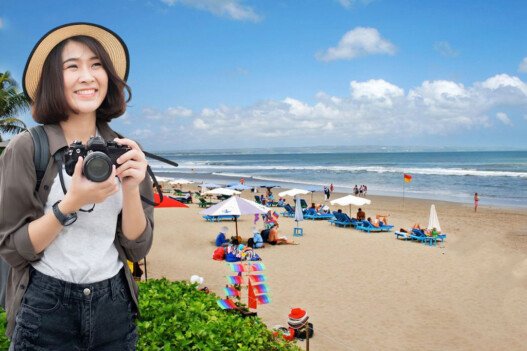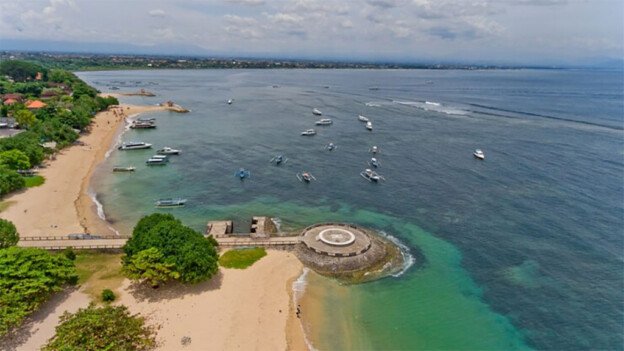Your Complete Guide to Navigating Bali Like a Respectful and Savvy Traveler
Bali, the Island of the Gods, captivates millions of visitors each year with its stunning landscapes, rich culture, and warm hospitality. However, many first-time visitors unknowingly make mistakes that can diminish their experience, offend locals, or even land them in trouble. Whether you’re planning your first trip to this Indonesian paradise or returning for another adventure, understanding what NOT to do is just as important as knowing what to do.
From cultural faux pas to safety oversights, this comprehensive guide will help you navigate Bali respectfully and enjoyably while avoiding the most common tourist pitfalls.
🛕 Cultural and Religious Mistakes
1. Don’t Dress Inappropriately at Temples
One of the most serious mistakes tourists make is visiting Bali’s sacred temples in revealing clothing. Balinese Hindu temples are deeply spiritual places that demand respect through proper attire.
What NOT to do:
- Wear shorts, tank tops, or revealing clothing
- Enter temples during menstruation (traditional rule for women)
- Touch sacred objects or statues
- Step on offerings placed on the ground
Do instead: Wear a sarong and sash (usually available for rent at temple entrances), cover your shoulders and knees, and observe quietly. Many temples provide traditional clothing for a small fee, so embrace this opportunity to dress respectfully.
2. Don’t Point Your Feet Toward Sacred Objects or People
In Balinese culture, feet are considered the lowest and most impure part of the body. Pointing your feet toward altars, statues, or even other people is deeply offensive.
What NOT to do:
- Sit with your feet pointing toward shrines or altars
- Step over offerings or religious items
- Use your feet to point at anything
Do instead: Sit cross-legged or with your feet tucked under you when near religious sites. If you must stretch your legs, point them away from sacred objects and people.
3. Don’t Touch People’s Heads
The head is considered the most sacred part of the body in Balinese Hindu culture. Touching someone’s head, even a child’s, is considered highly disrespectful.
What NOT to do:
- Pat children on the head
- Touch or lean over someone’s head
- Point above someone’s head
Do instead: Show affection through smiles and respectful gestures. If you want to interact with local children, crouch down to their level rather than reaching over them.
💰 Money and Bargaining Blunders
4. Don’t Accept the First Price Without Negotiating
Bali’s markets and many shops operate on a bargaining system. Accepting the first price offered often means you’re paying 3-5 times more than necessary, and locals may actually find it odd if you don’t negotiate.
What NOT to do:
- Pay the first price quoted at markets
- Bargain aggressively or rudely
- Walk away without counter-offering if you’re genuinely interested
Do instead: Start by offering 30-50% of the asking price and negotiate friendly. Remember, it’s a cultural practice, not an attempt to cheat you. Smile, be patient, and enjoy the interaction.
5. Don’t Forget to Check Your Change
Currency confusion and quick transactions can lead to receiving incorrect change, especially when dealing with large denominations of Indonesian Rupiah.
What NOT to do:
- Accept change without counting it
- Mix up similar-looking bills (50,000 and 100,000 Rupiah notes are both reddish)
- Flash large amounts of cash in public
Do instead: Familiarize yourself with Indonesian currency before arriving. Count your change politely, and keep small bills handy for easier transactions.
🚗 Transportation Troubles
6. Don’t Rent a Scooter Without Proper Preparation
Scooters are everywhere in Bali, and many tourists assume they’re easy to handle. However, Bali’s chaotic traffic, unique driving culture, and steep mountain roads can be dangerous for inexperienced riders.
What NOT to do:
- Rent a scooter without an international driving license
- Ride without a helmet
- Attempt mountain roads on your first day
- Ride under the influence of alcohol
Do instead: Get an International Driving Permit before traveling. Practice in quiet areas first, always wear a helmet, and consider hiring a driver for difficult routes. Many accidents happen to tourists on scooters, so prioritize safety over adventure.
7. Don’t Use Unmarked Taxis or Accept Street Offers
Unmetered taxis and informal drivers often overcharge tourists dramatically. Some may not be legitimate drivers at all.
What NOT to do:
- Get into unmarked vehicles
- Accept rides from random people on the street
- Use taxis without meters unless you agree on the price first
Do instead: Use official ride-hailing apps like Gojek or Grab, which are widely available and show transparent pricing. If using traditional taxis, insist on using the meter or negotiate the fare before starting your journey.
🏖️ Beach and Water Safety Oversights
8. Don’t Underestimate Ocean Conditions
Bali’s beaches can have strong currents, large waves, and dangerous undertows. Many tourists underestimate these conditions, leading to dangerous situations.
What NOT to do:
- Swim in areas without lifeguards during rough conditions
- Ignore red flags or warning signs
- Leave your belongings unattended on the beach
- Swim alone, especially at remote beaches
Do instead: Check with locals or lifeguards about current conditions. Swim at patrolled beaches when possible, and always inform someone of your beach plans. Popular beaches like Kuta and Seminyak have lifeguards, while more remote beaches may not.
9. Don’t Drink Tap Water or Eat from Questionable Sources
Bali’s tap water isn’t safe for consumption by most foreign visitors, and food safety standards can vary dramatically between establishments.
What NOT to do:
- Drink tap water or use it for brushing teeth
- Eat from roadside stalls that don’t look clean
- Accept drinks with ice of unknown origin
- Eat raw vegetables that may have been washed in tap water
Do instead: Stick to bottled or properly filtered water. Choose busy restaurants where food turns over quickly. If trying street food, look for vendors with long local queues – they usually indicate fresh, safe food.
🌿 Environmental and Ethical Errors
10. Don’t Support Animal Exploitation
Many tourist attractions in Bali involve animal exploitation, from elephant rides to photo opportunities with drugged wildlife.
What NOT to do:
- Ride elephants or support elephant parks
- Take photos with caged or chained animals
- Visit attractions where animals perform unnatural behaviors
- Buy products made from endangered species
Do instead: Research ethical wildlife experiences beforehand. Visit legitimate sanctuaries that focus on conservation and animal welfare. The Bali Wildlife Rescue Centre is an example of ethical animal tourism.
11. Don’t Contribute to Plastic Pollution
Bali faces a serious plastic pollution problem, and tourist consumption significantly contributes to this environmental crisis.
What NOT to do:
- Use single-use plastic bags and bottles excessively
- Leave trash on beaches or in nature
- Buy unnecessary plastic souvenirs
- Ignore recycling opportunities when available
Do instead: Bring a reusable water bottle and shopping bags. Choose accommodations and restaurants that minimize plastic use. Participate in beach cleanups if opportunities arise.
🏨 Accommodation and Booking Mistakes
12. Don’t Book Accommodation Without Research
Bali’s accommodation ranges from world-class resorts to questionable budget options. Location, legitimacy, and seasonal pricing can vary dramatically.
What NOT to do:
- Book the cheapest option without reading reviews
- Stay in areas prone to noise without checking first
- Ignore the distance to attractions you want to visit
- Book during peak season without understanding price differences
Do instead: Research neighborhoods thoroughly. Seminyak offers beaches and nightlife, Ubud provides culture and nature, while Sanur is quieter and family-friendly. Read recent reviews and check multiple booking platforms for pricing.
13. Don’t Ignore Local Customs in Your Accommodation
Even in hotels, respecting local customs enhances your experience and shows cultural sensitivity.
What NOT to do:
- Walk around hotels or guesthouses in swimwear outside pool areas
- Make excessive noise that disturbs other guests or locals
- Demand services that conflict with local religious practices
- Complain about traditional practices like morning temple ceremonies
Do instead: Dress appropriately when moving through hotel common areas. Embrace the sounds of Balinese culture, including early morning prayers. Ask respectful questions about local customs rather than demanding they be changed.
🍜 Food and Dining Don’ts
14. Don’t Miss Out on Local Cuisine Due to Fear
Many tourists stick to international food, missing Bali’s incredible culinary heritage due to unfounded fears about local cuisine.
What NOT to do:
- Only eat at tourist restaurants serving Western food
- Avoid all local food due to hygiene concerns
- Miss trying signature dishes like nasi goreng, gado-gado, or bebek betutu
- Eat only at your hotel
Do instead: Research recommended local restaurants (warungs). Start with popular local dishes at clean, busy establishments. Ask locals for their favorite eating spots – they know where the best and safest food is served.
15. Don’t Forget About Dietary Restrictions and Allergies
Indonesian cuisine uses many ingredients that might not be common in your home country, and communication about dietary restrictions can be challenging.
What NOT to do:
- Assume vegetarian means the same thing everywhere
- Forget to mention severe allergies
- Expect extensive English menus everywhere
- Assume all “chicken” dishes are actually chicken (sometimes it’s other poultry)
Do instead: Learn key phrases for your dietary restrictions in Indonesian. Carry a translated card explaining your allergies. Research common ingredients in Indonesian dishes beforehand. When in doubt, ask detailed questions or choose simpler dishes.
🎯 Final Thoughts: Embracing Bali Respectfully
Avoiding these common mistakes isn’t just about having a better vacation – it’s about being a responsible traveler who respects local culture, supports sustainable tourism, and creates positive interactions with the Balinese people.
Remember that Bali is not just a tourist destination; it’s home to millions of people with rich traditions, religious practices, and daily lives that continue beyond the tourist experience. The most rewarding travel experiences come from approaching new cultures with curiosity, respect, and humility.
Quick Reference Checklist:
- ✅ Research cultural customs before visiting temples
- ✅ Learn basic Indonesian phrases for common situations
- ✅ Carry appropriate clothing for religious sites
- ✅ Download ride-hailing apps and familiarize yourself with local transportation
- ✅ Bring reusable water bottles and bags
- ✅ Research ethical tour operators and activities
- ✅ Understand local tipping customs
- ✅ Keep digital and physical copies of important documents
- ✅ Purchase comprehensive travel insurance
- ✅ Exchange money at authorized locations
By avoiding these 15 common mistakes, you’ll not only have a safer and more enjoyable trip but also contribute to positive tourism that benefits both visitors and the beautiful island of Bali. The key is to approach your visit with respect, preparation, and an open mind ready to embrace one of the world’s most enchanting destinations.
Selamat jalan (safe travels) and enjoy your incredible Bali adventure!









